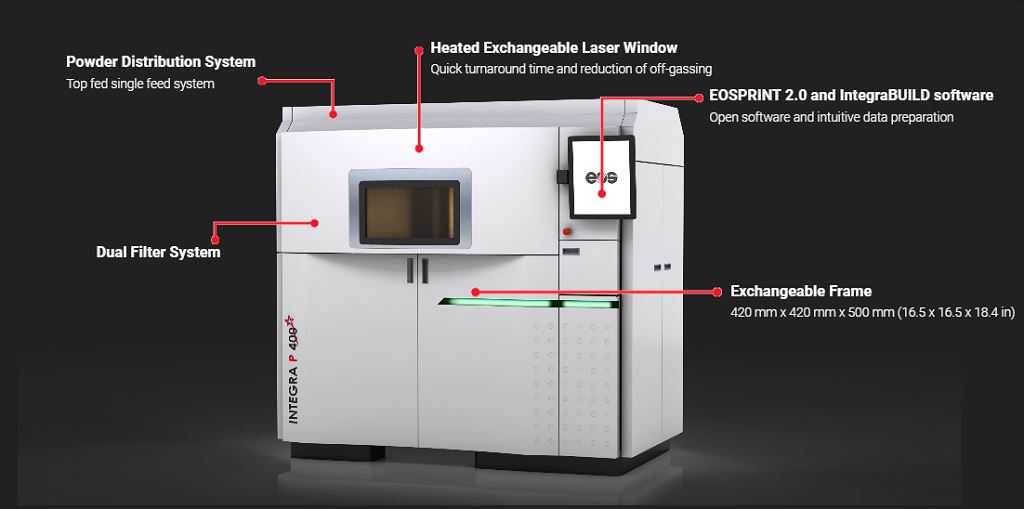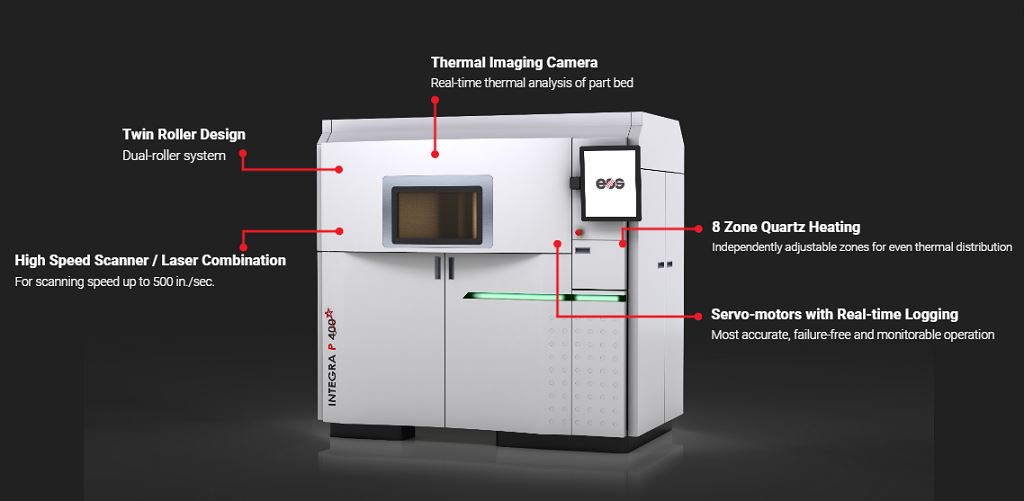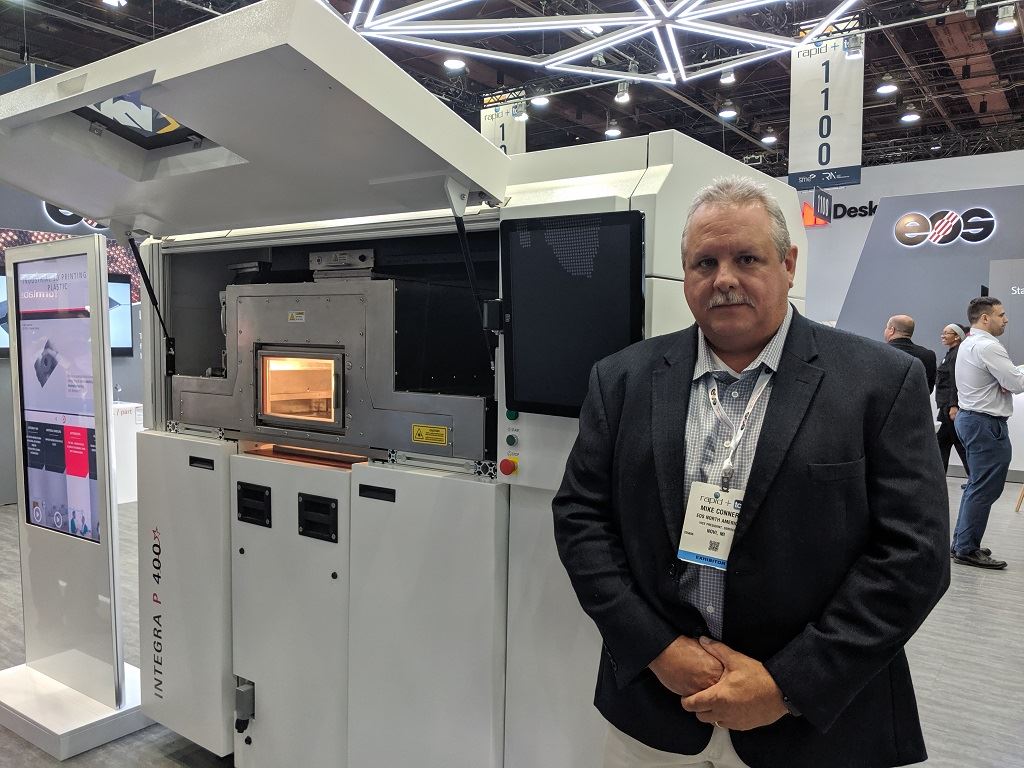![Mike Conner and the Integra P 400 [Image: Fabbaloo]](https://fabbaloo.com/wp-content/uploads/2020/05/eos1a_img_5eb0963e3934d.jpg)
EOS’ North America-focused Integra P 400 system continues toward commercialization.
Mike Conner, Vice President of Service at EOS North America, shared a look at the system during a recent conversation.
It was a relatively thorough look — at least at the system’s look, if not its action.
“This one is a shell of itself, because customers couldn’t wait,” Conner said, gesturing to the Integra P 400 the EOS team brought to RAPID + TCT.
The system is still in beta now, with four customer installations for important early feedback. The first early adopters announced include Honeywell and CRP USA.
Back at RAPID, the feedback was pretty clear: the Integra P 400 is something the market wants. It was introduced late last year as a system specifically for the North American market. Development and production are focused in Texas, where EOS’ operations continue to expand.
The P 400 was designed as a mid-temperature system, Conner explained, able to handle TPU, TPE, and HT-23. It works with materials that need temperatures up to 300C that “other systems can’t do; we wanted this system to run the materials gamut.”
![Build area of the Integra P 400 [Image: Fabbaloo]](https://fabbaloo.com/wp-content/uploads/2020/05/eos2a_img_5eb0963e9885e.jpg)
“It’s a simple machine,” Conner said. “It’s very fast, accurate, and easily serviced. One engineer could do it all themselves, so it’s not required to have multiple people on-site.”
The mechanics of the P 400 were informed by the last several decades of experience at EOS: “It’s changes people wanted to see,” Conner said. The updates in this system include “a lot of tech we’ve been testing out” such as closer in-print monitoring. The camera examines, zone by zone, progress while printing, and the system “can compensate for hot or cold zones during the build.”
A multi-box feed system uses “the same boxes that work with other EOS equipment,” ensuring existing EOS customers will be familiar with the setup. Optics can be changed out without requiring recalibration. The system runs with EOSPRINT 2.0 software.
“We also tried to make it modular to future-proof it so users can add new capabilities and easily upgrade to the next generations,” Conner said.
In the next year or so, he added, about 30 materials will be available to run on the P 400. These will include a pretty wide range, from TPU to Nylon 11 and 12, to PEKK: “No other systems out there use all of these. We want users to have these capabilities, and use this platform to develop with their needs.”


Features on the Integra P 400 [Images: EOS North America]
The North American Additive Minds team is working on process development of the Integra P 400, in the field with customers. The work they are doing together is building up to the full release of the system — which, while initially focused only in North America, is eventually planned to go global.
“I’ve been in this industry since 1992, and I’ve seen things grow and mature over the years. This machine is simple by design: we wanted something robust, repeatable, and easy to use. It’s not perfect — it may never be — but it fits customer needs,” Conner said.











FELIXprinters has released a new bioprinter, the FELIX BIOprinter, which is quite a change for the long-time 3D printer manufacturer.